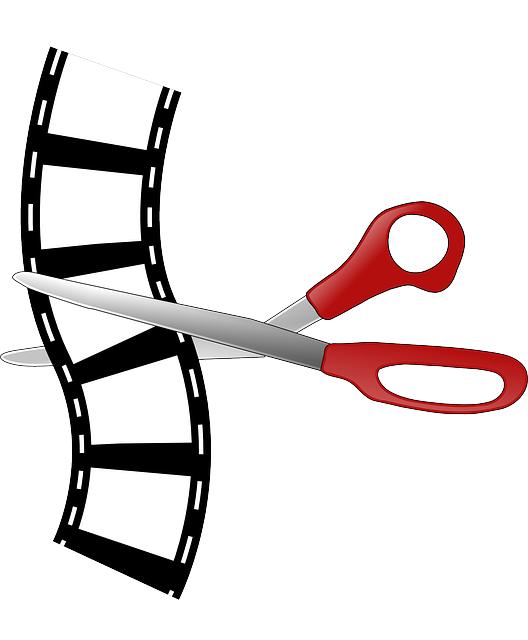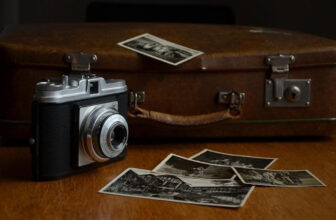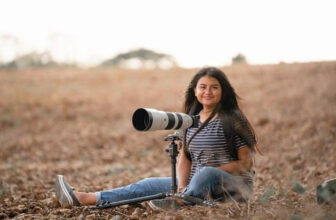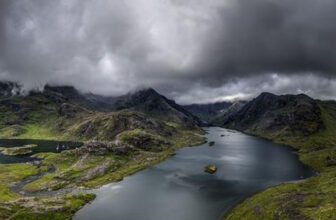Capturing Wildlife: Top Photography Tips for Animal Enthusiasts
GoogleAds

In the world of wildlife photography, capturing the beauty and essence of animals in their natural habitats can be a challenging yet rewarding endeavor. For animal enthusiasts looking to sharpen their photography skills and learn how to capture stunning images of wildlife, there are a few key tips and techniques to keep in mind. From understanding animal behavior to mastering composition and lighting, these top photography tips will help you elevate your wildlife photography game and create images that truly capture the spirit of the animal kingdom.
Introduction
Welcome to our guide on capturing wildlife through photography! For animal enthusiasts, there is nothing quite like the thrill of getting up close and personal with wildlife through the lens of a camera. In this article, we will provide you with top photography tips to help you take your wildlife photography to the next level.
When it comes to wildlife photography, preparation is key. Before heading out into the wilderness, make sure you have the right gear. This includes a telephoto lens to capture animals from a distance, a sturdy tripod to keep your shots steady, and plenty of memory cards and extra batteries. Being prepared will ensure that you don’t miss any important shots.
One of the most important tips for wildlife photography is to practice patience. Animals can be unpredictable, so be prepared to wait for the perfect shot. Find a good vantage point, set up your equipment, and wait for the magic to happen. Remember, the best wildlife photos often come to those who are willing to put in the time and effort.
Another key tip for capturing wildlife is to research your subjects. Understanding the behavior and habits of the animals you are photographing will help you anticipate their movements and get the perfect shot. Whether it’s studying animal migration patterns or learning about their natural habitats, the more you know about your subjects, the better your photos will be.
Finally, don’t be afraid to get creative with your wildlife photography. Experiment with different angles, compositions, and lighting to add interest to your shots. Whether it’s capturing a close-up of a lion’s eyes or a silhouetted giraffe against a sunset, don’t be afraid to think outside the box and push the boundaries of traditional wildlife photography.

Choosing the Right Equipment
When it comes to capturing wildlife through photography, having the right equipment can make all the difference. One of the most important components of your gear is your camera. Look for a camera with a high resolution and fast shutter speed to capture those quick movements of animals in the wild. It’s also essential to have a variety of lenses to choose from, ranging from wide-angle for landscapes to telephoto for close-ups of distant creatures.
Investing in a sturdy tripod is also crucial for capturing sharp images, especially when shooting in low light conditions or using a long lens. A tripod will help you keep your camera steady and avoid blurry or shaky shots. Additionally, consider bringing along a remote shutter release to minimize camera shake further.
When it comes to selecting a camera bag, opt for one that is comfortable to carry over long distances and provides ample protection for your equipment. Look for a bag with padded compartments to keep your gear safe and organized while out in the field. It’s also wise to choose a bag that is weatherproof to protect your gear from the elements.
Don’t forget about accessories like extra batteries and memory cards. Wildlife photography often requires long hours in remote locations, so having backup power sources and ample storage space for your photos is essential. Consider investing in a battery grip to extend your shooting time, and always carry spare batteries and memory cards with you.
Lastly, make sure to pack cleaning supplies for your equipment, such as lens cloths and brushes. Dust, dirt, and moisture are common challenges when shooting in the wild, so regularly cleaning your gear will help maintain the quality of your images. Keep your equipment in top condition to ensure that you’re always ready to capture those perfect wildlife moments.
Understanding Animal Behavior
Capturing Wildlife: Top Photography Tips for Animal Enthusiasts
Whether you’re a seasoned wildlife photographer or just starting out, capturing the beauty and behaviors of animals in their natural habitat can be a thrilling experience. With some preparation and the right techniques, you can take stunning photos that truly showcase the wonders of the animal kingdom.
1. Research Your Subject: Before heading out to photograph wildlife, do some research on the animals you plan to capture. Understand their behaviors, habitats, and typical movement patterns. This knowledge will help you anticipate their actions and get the perfect shot.
2. Use the Right Equipment: Invest in a quality camera with a telephoto lens to capture animals from a safe distance without disturbing them. A tripod can also be helpful for stabilizing your shots, especially in low light conditions.
3. Practice Patience: Wildlife photography requires patience and persistence. Set up your equipment in a comfortable spot and wait for the animals to come to you. Avoid making sudden movements or loud noises that could scare them away.
4. Capture Natural Behavior: Focus on capturing the natural behavior of animals, whether it’s hunting for prey, grooming each other, or playing. Candid shots of animals in their element make for more authentic and compelling photos.
| Tip: | Try shooting during the golden hours of sunrise and sunset for beautiful lighting that enhances your wildlife photos. |

Mastering Composition and Lighting
When it comes to capturing wildlife through photography, composition and lighting are two key elements that can make or break a shot. Whether you’re out in the wilderness or exploring your local zoo, mastering these skills can help you create stunning images that truly showcase the beauty of the animals you encounter.
Tips for Composition:
- Focus on the eyes: The eyes are often the most captivating part of an animal, so make sure they are in focus and prominently featured in your shot.
- Use the rule of thirds: Positioning your subject off-center can create a more dynamic and visually appealing composition.
- Consider the background: A cluttered or distracting background can take away from your subject, so look for clean, simple backgrounds that help your subject stand out.
Tips for Lighting:
- Golden hour is your friend: The soft, warm light during sunrise and sunset can add a magical quality to your wildlife photos.
- Avoid harsh shadows: Direct sunlight can create harsh shadows that detract from your subject. Consider using diffused light or shooting on overcast days.
- Experiment with backlighting: Backlighting can create a beautiful halo effect around your subject, adding depth and drama to your images.
| Composition Tips | Lighting Tips |
|---|---|
| Focus on the eyes | Golden hour is your friend |
| Use the rule of thirds | Avoid harsh shadows |
| Consider the background | Experiment with backlighting |
By paying attention to composition and lighting in your wildlife photography, you can take your images to the next level and create photos that truly capture the essence of the animals you encounter.

Finding the Perfect Location
When looking for the perfect location to capture wildlife through your camera lens, there are a few key factors to consider. The first consideration is the type of wildlife you are hoping to photograph. Different animals are native to specific habitats, so research the species you are interested in and find out where they are commonly found.
Another important factor to consider is the time of day. Many animals are most active during dawn and dusk, known as the “golden hours” for photography. Plan your shoot during these times to increase your chances of capturing dynamic and captivating shots.
Pay attention to the natural features of the location, such as water sources, food availability, and shelter. Animals tend to gather in areas where their needs are met, so choose a location that offers these essential elements for the best chance of spotting wildlife.
Consider the accessibility of the location as well. Some wildlife habitats may require hiking or trekking to reach, so make sure you are prepared for the journey and have the necessary equipment to keep yourself safe and comfortable during your photography expedition.
Ultimately, to capture wildlife requires patience, research, and a bit of luck. By taking the time to scout out the best spots, considering the habits of the animals you wish to photograph, and being prepared for the elements, you can increase your chances of snapping truly breathtaking wildlife shots.

Developing Patience and Persistence
When it comes to capturing wildlife through photography, patience and persistence are key. As an animal enthusiast, it’s important to understand that getting the perfect shot may require waiting for hours or even days. This level of dedication is what sets great wildlife photographers apart from the rest.
One way to develop patience is to research the behavior of the animals you want to photograph. Understanding their habits and routines can help you anticipate their movements and get in the right position to capture the perfect shot.
Another important tip is to invest in quality gear. Having the right camera and lenses can make a world of difference when it comes to capturing wildlife. Make sure to also pack essentials such as extra batteries, memory cards, and a sturdy tripod to ensure you’re always prepared.
Don’t be afraid to experiment with different techniques and angles. Sometimes, the most interesting shots come from trying something new. Be open to learning from your mistakes and constantly striving to improve your skills as a photographer.
Remember, capturing wildlife through photography is a challenging yet rewarding pursuit. By practicing patience and persistence, you’ll be able to capture breathtaking images that truly showcase the beauty of the natural world.

Editing and Enhancing Wildlife Photos
Whether you are a professional wildlife photographer or just a hobbyist, capturing the beauty of animals in their natural habitat can be a rewarding experience. However, the process doesn’t end with just snapping the perfect shot. Editing and enhancing your wildlife photos can take your images to the next level and truly bring out the beauty of the animals you have captured on camera.
One of the first steps in editing wildlife photos is to adjust the exposure levels. This can help bring out details in the shadows and highlights, making your images more vibrant and dynamic. Use the exposure adjustment tool in your editing software to fine-tune the brightness and contrast of your photos.
Another important aspect of editing wildlife photos is sharpening the images. This can help make the fur, feathers, or scales of the animals stand out more and give your photos a crisp, professional look. Use the sharpening tool in your editing software to enhance the details in your images without overdoing it.
Adding a touch of color correction can also make a big difference in enhancing your wildlife photos. Adjusting the white balance, saturation, and vibrancy of your images can help bring out the natural colors of the animals and make your photos more visually appealing. Experiment with different color correction settings to find the perfect balance for each photo.
Finally, don’t be afraid to get creative with your editing process. Experiment with different filters, effects, and cropping techniques to make your wildlife photos truly unique. Remember, editing is not about altering the reality of the scene, but rather enhancing the beauty that is already there. With a little patience and practice, you can turn your raw wildlife photos into stunning works of art.

Respecting and Protecting Wildlife
As animal enthusiasts, capturing wildlife through photography can be a rewarding experience. However, it’s crucial to remember the importance of respecting and protecting the wildlife you encounter. Here are some top photography tips to help you effectively capture wildlife in a responsible manner.
1. Keep Your Distance: When photographing wildlife, it’s important to maintain a safe distance to avoid causing distress to the animals. Use a telephoto lens to get close-up shots without intruding on their natural habitat.
2. Be Patient: Wildlife photography requires a lot of patience. Spend time observing the animals and their behavior to anticipate the best moments to capture stunning shots.
3. Use Natural Light: Avoid using flash photography as it can startle and stress out the animals. Instead, take advantage of natural light to enhance the beauty of your wildlife photos.
4. Respect their Environment: Always be mindful of the wildlife’s surroundings and avoid disrupting their habitat. Stay on designated paths and avoid trampling on vegetation to preserve their home.
| Do’s | Don’ts |
|---|---|
| Do use a telephoto lens | Don’t get too close to the animals |
| Do observe animal behavior | Don’t disturb their natural habitat |
| Do use natural light | Don’t use flash photography |
5. Learn about the Species: Understanding the behavior and habits of the wildlife you’re photographing can help you anticipate their movements and capture more authentic shots. Take the time to research and educate yourself about the species you’re photographing.
Q&A
Q: Why should wildlife enthusiasts consider taking up photography?
A: Wildlife photography allows enthusiasts to capture and share the beauty of animals in their natural habitats, while also promoting conservation and raising awareness about endangered species.
Q: What are some essential tips for capturing high-quality wildlife photographs?
A: Some key tips include researching animal behavior, using the right equipment, being patient, and respecting the animals and their environments.
Q: How can lighting affect wildlife photography?
A: Lighting is crucial in photography, as it can enhance the details and colors of the animals. The golden hours of sunrise and sunset usually provide the best lighting for wildlife photography.
Q: How important is it for photographers to have knowledge about the animals they are photographing?
A: Having knowledge about the behavior and habits of the animals being photographed is essential for capturing authentic and impactful images. It can also help photographers anticipate movements and capture unique moments.
Q: Is post-processing necessary in wildlife photography?
A: Some amount of post-processing can enhance the overall quality of wildlife photographs, but it is important to maintain the authenticity of the images and not alter them drastically. Subtle adjustments can help bring out the best in the photos.
Q: How can photographers contribute to wildlife conservation through their work?
A: By showcasing the beauty and importance of wildlife through their photographs, photographers can raise awareness about conservation issues and inspire others to take action to protect animals and their habitats.
Final Thoughts
In conclusion, capturing wildlife through photography can be a rewarding experience for animal enthusiasts. By following these top tips, you can improve your skills and enhance your photographs of beautiful and fascinating creatures in their natural habitats. Remember to always respect the wildlife and their surroundings, and prioritize their well-being above all else. Happy shooting!
GoogleAds







